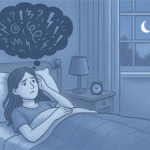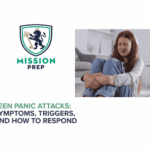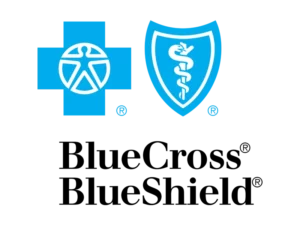Key Takeaways
- Panic attacks and seizures share overlapping symptoms but have fundamentally different origins. One stems from psychological distress while the other involves abnormal electrical brain activity.
- While panic attacks don’t directly cause epileptic seizures, severe anxiety can trigger psychogenic non-epileptic seizures (PNES), which mimic epileptic seizures but without abnormal brain activity.
- Accurate diagnosis between panic attacks, PNES, and epileptic seizures requires professional assessment, often including EEG monitoring and video recording of episodes.
- Treatment approaches differ significantly – panic attacks respond to therapy and anti-anxiety medications, while epileptic seizures require anticonvulsant medications.
- At Mission Prep Teen Treatment, we provide comprehensive assessment and personalized treatment plans for adolescents experiencing anxiety disorders and seizure-like symptoms.
Panic Attack Basics
Panic attacks are intense episodes of fear that trigger severe physical reactions when no real danger is present. They typically peak within minutes and can leave you feeling like you’re losing control, having a heart attack, or even dying. These symptoms occur because your body’s fight-or-flight response floods your system with stress hormones, particularly adrenaline, preparing you to face a perceived threat.
While terrifying, panic attacks themselves are not dangerous. However, the fear they generate can create a cycle of anxiety; many people develop a fear of having another attack, which can lead to avoidance behaviors and, in some cases, panic disorder. Understanding that these episodes, though frightening, are not life-threatening is the first step toward recovery.
Mission Prep Healthcare specializes in mental health treatment for teens aged 12-17, offering residential and outpatient programs for anxiety, depression, trauma, and mood disorders. Our therapies include CBT, DBT, EMDR, and TMS, tailored to each adolescent’s needs.
With a structured, supportive environment, we integrate academic support and family involvement to promote lasting recovery. Our goal is to help teens build resilience and regain confidence in their future.
Seizures Explained
Seizures are sudden, uncontrolled electrical disturbances in the brain that can cause changes in behavior, movements, feelings, and levels of consciousness. Unlike panic attacks, which stem from psychological distress, seizures result from abnormal electrical activity in brain cells. Epilepsy, a neurological disorder characterized by recurrent seizures, affects about 3.4 million Americans, including nearly 470,000 children.
There are many types of seizures, each with distinct symptoms. Generalized seizures affect the entire brain and include tonic-clonic seizures (formerly called grand mal), which involve loss of consciousness, muscle rigidity, and convulsions. Focal seizures affect just one area of the brain and may cause altered awareness, involuntary movements, or sensory changes without necessarily losing consciousness.
Seizures can be triggered by various factors including missed medication, sleep deprivation, stress, illness, flashing lights, or hormonal changes. While some people with epilepsy can identify their triggers, others experience seizures with no apparent cause. Proper diagnosis typically requires medical tests like electroencephalograms (EEGs) to measure brain activity, along with detailed medical history and symptom analysis.
The Connection Question
Direct Causation
Panic attacks do not directly cause epileptic seizures in people who don’t already have epilepsy. The physiological mechanisms behind these conditions are distinct: panic attacks involve the body’s stress response system and the release of adrenaline, while epileptic seizures result from abnormal electrical activity in the brain. However, for people who already have epilepsy, severe stress and anxiety (including panic attacks) can sometimes lower the seizure threshold, potentially making seizures more likely to occur.
Understand that while panic attacks can’t cause epilepsy to develop, they can sometimes trigger seizures in those who already have the condition. This relationship works in the other direction too; people with epilepsy have higher rates of anxiety disorders, including panic disorder, than the general population. This bidirectional relationship suggests shared vulnerabilities rather than direct causation.
PNES vs. Epilepsy
While panic attacks don’t directly cause epileptic seizures, there’s an important middle ground to understand: psychogenic non-epileptic seizures (PNES). PNES are seizure-like episodes that look similar to epileptic seizures but don’t involve abnormal electrical activity in the brain. Instead, they’re psychological in origin, often linked to severe emotional distress, trauma, or psychiatric conditions including anxiety disorders.
PNES can be difficult to distinguish from epileptic seizures without specialized testing. Many people with PNES are initially misdiagnosed with epilepsy and may receive inappropriate treatment for years. Research suggests that up to 20–40% of patients referred to epilepsy centers for difficult-to-treat seizures actually have PNES rather than epilepsy. For teens experiencing panic attacks, understanding the possibility of PNES is crucial for proper diagnosis and treatment.
Some individuals experience both epileptic seizures and PNES, further complicating diagnosis and treatment. This dual diagnosis requires careful management of both the neurological and psychological aspects of care.
Shared Triggers
Both panic attacks and seizures (including PNES) can share common triggers, which sometimes leads to confusion between these conditions. Stress is perhaps the most significant shared trigger. High stress levels can precipitate panic attacks in vulnerable individuals and may lower the threshold for seizures in people with epilepsy. Sleep deprivation, hormonal changes, and certain medications can also trigger both conditions.
Environmental factors like bright or flashing lights, loud noises, or strong odors might trigger seizures in some people with epilepsy, but these same stimuli can sometimes trigger panic attacks in people with anxiety disorders. The overlap in triggers means that lifestyle management strategies often benefit both conditions, though specific medical treatments differ significantly.
Look-Alike Symptoms
Physical Signs

The physical manifestations of panic attacks and seizures can appear remarkably similar to untrained observers.
Both panic attacks and seizures involve muscle tension, trembling or shaking, sweating, rapid heartbeat, and breathing changes. Some people experiencing panic attacks report numbness or tingling sensations, particularly in their extremities, which can also occur during certain types of seizures.
However, there are some key differences. Epileptic seizures, particularly generalized tonic-clonic seizures, typically involve loss of consciousness, whereas people having panic attacks remain conscious (though they may feel detached from reality). Seizures may include rhythmic jerking movements, whereas panic-related trembling is typically less organized. Bladder or bowel control loss is common during tonic-clonic seizures but rare during panic attacks.
Mental Experiences
The subjective experience differs significantly between panic attacks and seizures. During a panic attack, teens typically experience intense fear and a sense of impending doom or catastrophe. There’s often a feeling that something terrible is about to happen, accompanied by racing thoughts and hyperawareness of bodily sensations. The person remains aware of their surroundings, though they may feel detached or experience derealization.
By contrast, during many types of seizures, especially those involving altered consciousness, the individual typically doesn’t experience fear (though they may feel fear before or after the seizure). During the seizure itself, awareness is either altered or completely absent. Some focal seizures can produce unusual sensory experiences like strange smells, sounds, or visual distortions, which differ from the anxiety-driven perceptions during panic attacks.
Duration Differences
Timing is another important distinguishing feature between panic attacks and seizures. Panic attacks typically build gradually, peak within about 10 minutes, and then gradually subside over 20–30 minutes. Though intense, they rarely last longer than an hour. The person may feel exhausted afterward but can typically recall the entire episode in detail.
Most seizures are briefer, typically lasting seconds to a few minutes. Tonic-clonic seizures rarely continue longer than 2–3 minutes without stopping on their own. A prolonged seizure lasting more than 5 minutes (status epilepticus) is a medical emergency requiring immediate attention. After a seizure, many people experience a “postictal” period of confusion, fatigue, or sleepiness that can last minutes to hours, and they typically have little or no memory of the seizure itself.
Telling Them Apart
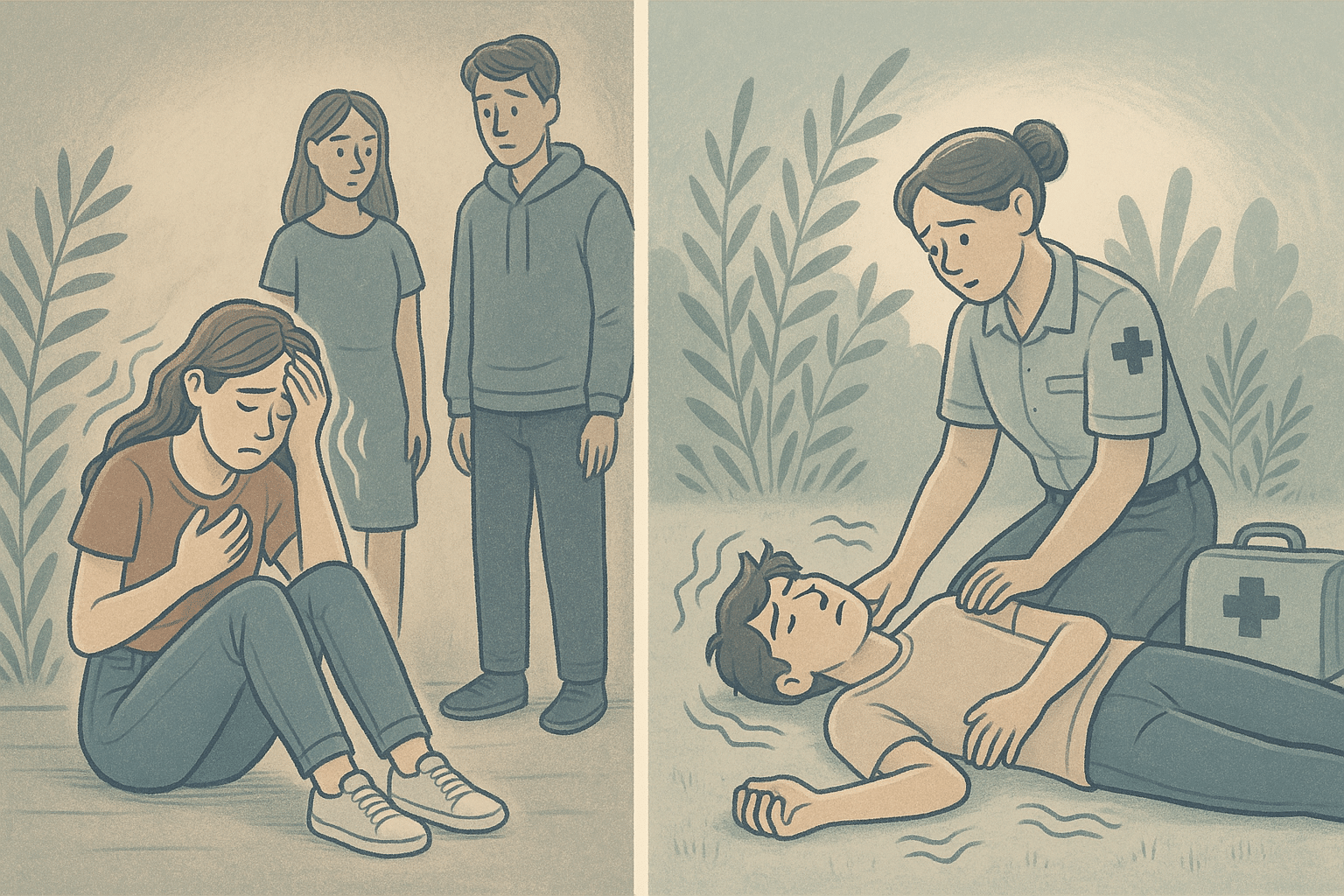
While the conditions share some overlapping features, several key differences can help determine the correct diagnosis.
Key Differences
With panic attacks, symptoms typically build gradually rather than appearing suddenly, and the episode centers around intense fear or anxiety. Teens remain conscious throughout, can interact with others (though they may be distressed), and can recall the event afterward.
Epileptic seizures, by contrast, typically begin abruptly without warning (though some people experience an “aura” just before). They may involve loss of consciousness, stereotyped (repetitive) movements, tongue biting, incontinence, and a postictal period of confusion. People typically cannot recall what happened during the seizure itself. PNES falls somewhere between, with features that may resemble seizures but often with atypical patterns and a stronger correlation with emotional triggers.
Medical Tests
Definitive diagnosis often requires specialized testing. The gold standard for distinguishing epileptic seizures from PNES or panic attacks is video-EEG monitoring, where brain activity is continuously recorded while the patient is observed via video. During an epileptic seizure, the EEG shows characteristic abnormal electrical activity, while during PNES or panic attacks, the EEG remains normal despite seizure-like behaviors or symptoms.
Other diagnostic tools include brain imaging (MRI or CT scans) to look for structural abnormalities that might cause seizures, blood tests to check for metabolic problems, and detailed medical and psychological evaluations. For teens, a thorough developmental history and assessment of academic, social, and emotional functioning provides important context for accurate diagnosis and treatment planning.
Treatment Approaches
For Panic Attacks
Treatment for panic attacks and panic disorder typically combines psychotherapy and sometimes medication. Cognitive Behavioral Therapy (CBT) is particularly effective, helping teens identify and change thought patterns that contribute to panic while developing coping strategies for physical symptoms. Exposure therapy, which gradually exposes the person to panic-inducing situations in a controlled, safe environment, can reduce sensitivity to triggers over time.
Medications may include selective serotonin reuptake inhibitors (SSRIs), which can reduce panic attack frequency and severity, though they typically take several weeks to become fully effective. For rapid relief during acute episodes, benzodiazepines might be prescribed, but these are used cautiously due to potential dependence issues, especially in adolescents. Lifestyle modifications like regular exercise, adequate sleep, stress management techniques, and avoiding caffeine and alcohol can also significantly reduce panic symptoms.
For Seizures
Epileptic seizures are primarily treated with anticonvulsant medications, which help stabilize electrical activity in the brain. Finding the right medication and dosage can take time and may require adjustments based on seizure control and side effects. For adolescents, considering the medication’s effects on development, cognition, and quality of life are particularly important.
When medications don’t provide adequate seizure control, additional options may include vagus nerve stimulation, specialized diets (like the ketogenic diet), or in some cases, surgical interventions. Complementary approaches focus on identifying and avoiding seizure triggers, maintaining regular sleep patterns, and managing stress.
For PNES
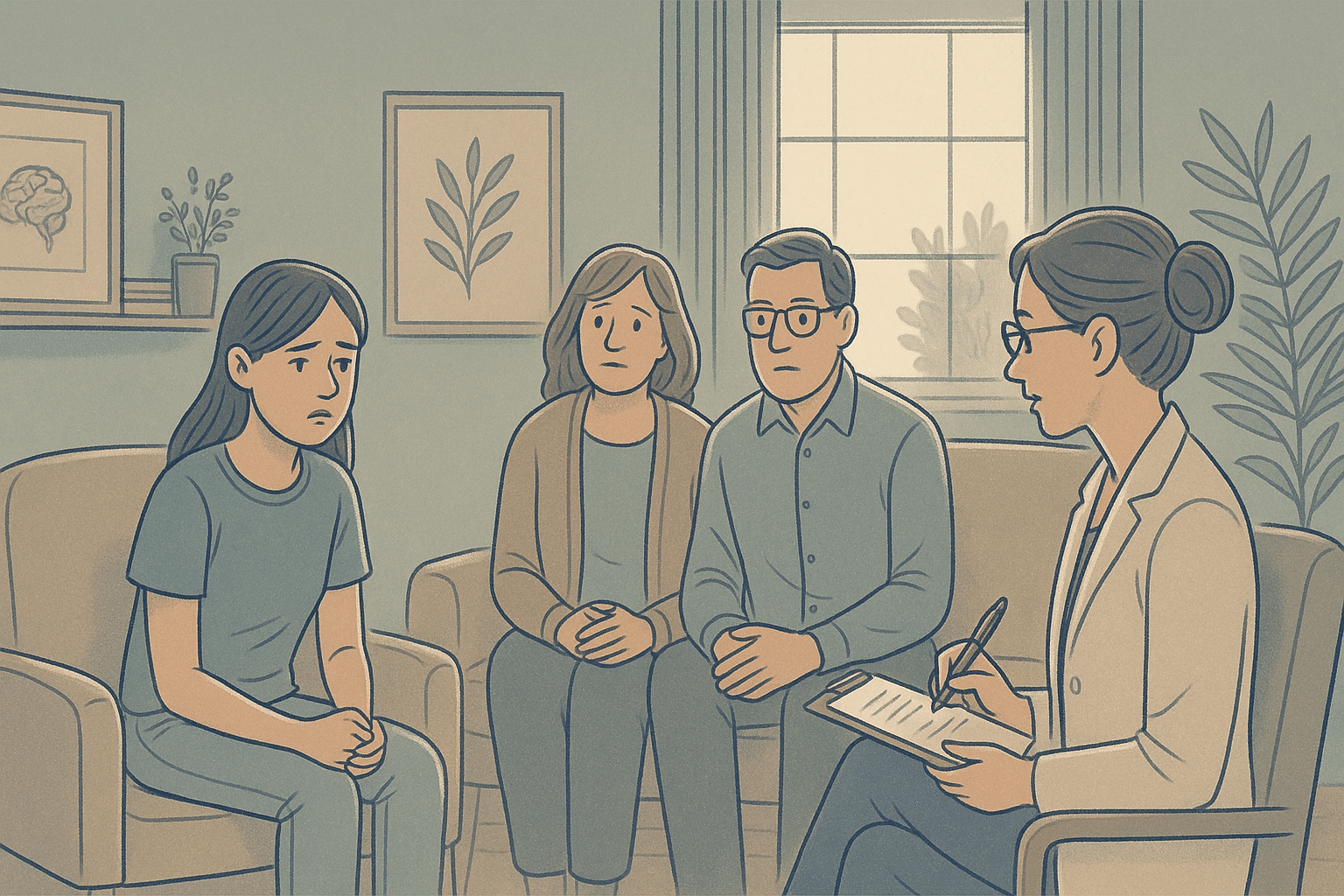
Treatment for psychogenic non-epileptic seizures primarily involves psychotherapy to address underlying psychological factors.
Cognitive Behavioral Therapy, trauma-focused therapy, and stress management techniques are often effective. Unlike epileptic seizures, PNES does not respond to anticonvulsant medications, which is why proper diagnosis is crucial to avoid unnecessary drug exposure.
For many teens with PNES, addressing any underlying trauma, anxiety, depression, or family dysfunction is essential for recovery. A multidisciplinary approach involving mental health professionals, neurologists, and sometimes family therapy yields the best outcomes.
Comprehensive Care for Panic and Seizure-Like Symptoms at Mission Prep
At Mission Prep Healthcare, our multidisciplinary team combines neurological and psychological expertise to provide thorough evaluations for adolescents experiencing panic attacks, seizure-like episodes, or both. We understand that misdiagnosis can lead to years of inappropriate treatment, which is why we invest in proper diagnostic procedures including detailed psychological assessments and family evaluations.

What sets Mission Prep apart is our integrated approach to treatment. Our residential programs provide the intensive, coordinated care needed for optimal outcomes.
If you’re experiencing panic disorder, PNES, or complex presentations involving both anxiety and neurological symptoms, our evidence-based treatments include Cognitive Behavioral Therapy, Dialectical Behavior Therapy, family therapy, and medical management when appropriate.
We believe that with proper diagnosis and comprehensive treatment, you can successfully manage these challenging conditions and reclaim your life. Our goal is not just symptom management but helping teens develop the skills and confidence needed for long-term success.
Frequently Asked Questions
Can panic attacks actually trigger seizures in people with epilepsy?
While panic attacks don’t directly cause epileptic seizures, they can potentially lower the seizure threshold in individuals who already have epilepsy. The stress and physiological changes during a panic attack may make breakthrough seizures more likely in vulnerable individuals. However, this doesn’t mean panic attacks cause epilepsy to develop in people who don’t already have the condition.
How can I tell if my teen is having a panic attack or a seizure?
Key differences include consciousness level (panic attacks maintain awareness while many seizures involve altered consciousness), memory of the event (panic attacks are typically remembered while seizures often aren’t), and symptom patterns (panic attacks involve intense fear and build gradually, while seizures often start abruptly with stereotyped movements).
What are psychogenic non-epileptic seizures (PNES) and how are they related to anxiety?
PNES are seizure-like episodes that appear similar to epileptic seizures but don’t involve abnormal electrical brain activity. They’re psychological in origin and can be triggered by severe emotional distress, trauma, or anxiety disorders. Unlike epileptic seizures, PNES don’t respond to anticonvulsant medications and require psychological treatment approaches.
What tests are used to diagnose the difference between panic attacks and seizures?
The gold standard is video-EEG monitoring, which simultaneously records brain activity and behavior during episodes. During epileptic seizures, the EEG shows abnormal electrical patterns, while during panic attacks or PNES, the EEG remains normal. Additional tests may include brain imaging, blood work, and comprehensive psychological evaluation.
How does Mission Prep approach treatment for teens with panic attacks and seizure-like symptoms?
Mission Prep provides comprehensive, multidisciplinary assessment to accurately diagnose the underlying condition, whether it’s panic disorder, PNES, or coexisting conditions. Our treatment approach includes evidence-based therapies like CBT and DBT, family therapy, residential programs with 24/7 support, and coordination with medical specialists to ensure integrated care for complex cases.





